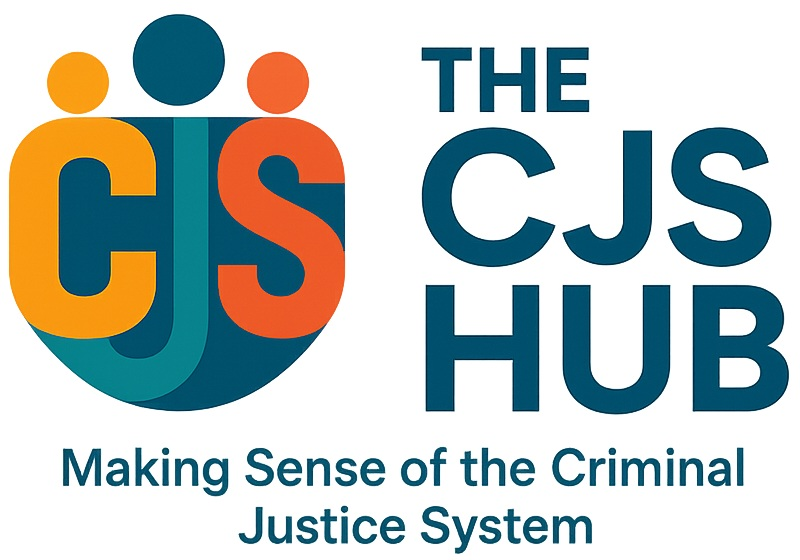One of the hardest parts of going through the criminal justice system — whether you’re serving time or supporting someone inside — is trying to understand when release might actually happen. There isn’t one simple answer, because different types of sentence have very different rules about when someone can leave custody. Knowing how the system works helps you plan, manage expectations, and focus on what you can control along the way.
Fixed-Term (Determinate) Sentences
Most people in prison are serving what’s called a determinate sentence. That simply means the court sets a fixed length, and your release date is calculated from that.
For determinate sentences under four years, the usual rule is that you serve half of the sentence in custody and the rest on licence in the community, under probation supervision. If you’re given four years, for example, you’ll normally spend around two inside, then be released automatically at the halfway point. You don’t need to apply — it’s automatic unless something unusual happens, like being recalled or facing new charges.
For sentences over four years, the process can be slightly different depending on the offence and the level of risk assessed by probation. Some prisoners are still released automatically at the halfway stage, but others may have to wait until they’ve served two-thirds before automatic release kicks in. In certain cases — especially for more serious offences — release at two-thirds is no longer automatic and instead depends on a review by the Parole Board.
Extended Determinate Sentences (EDS)
If someone has been deemed a higher risk to the public, they might be given an Extended Determinate Sentence. These combine a custodial period with an extended period of licence once released. The big difference here is that release is not automatic at halfway — you usually have to serve two-thirds of the custodial part before you’re even eligible to apply for release, and it’s the Parole Board that decides whether you can leave at that point. If they say no, you’ll stay inside until the end of the custodial term before moving onto licence.
Life Sentences
Life doesn’t always mean life — but it does mean the sentence lasts for the rest of the person’s life. When a court hands down a life sentence, it also sets a minimum term (sometimes called the “tariff”), which is the amount of time that must be served before the person can even be considered for release.
Once that minimum term has been served, the case goes to the Parole Board, who look at things like behaviour in custody, completed courses, risk assessments, and any evidence of rehabilitation. There’s no guarantee of release at the tariff point — some people spend many more years inside if the board isn’t satisfied that the risk can be managed in the community. Even after release, people on life sentences remain on licence for the rest of their lives and can be recalled at any time.
IPP Sentences (Imprisonment for Public Protection)
Although IPP sentences were scrapped in 2012, thousands of people are still serving them today. They’re one of the most complex and controversial parts of the system. With an IPP, the judge sets a minimum tariff, but after that, there’s no automatic release.
People on IPP stay in custody until the Parole Board is convinced that the risk can be safely managed in the community. Many people serve far beyond their tariffs, and even after release, the licence period lasts at least ten years before it can be considered for termination. If you or someone you’re supporting is serving an IPP, seeking specialist advice and gathering strong evidence of rehabilitation can make a huge difference.
Home Detention Curfew (HDC) and Early Release
For some people serving determinate sentences of between 12 weeks and four years, there’s a possibility of being released earlier than the halfway point under the Home Detention Curfew (HDC) scheme — often called “tagging.”
Eligibility depends on the sentence length, behaviour in custody, and whether there’s a safe address to go to. If approved, you could leave prison up to 135 days early, but you’ll have strict curfew conditions and electronic monitoring. Not everyone qualifies — violent, sexual, and high-risk cases are often excluded — but it’s worth applying if you meet the criteria.
Preparing for Release
Across all sentence types, your behaviour, engagement with rehabilitation, and willingness to prepare for life outside can affect release decisions — especially where the Parole Board is involved. Completing accredited courses, keeping out of trouble, working or studying inside, and showing progress in managing risk can all strengthen your position when the time comes.
If you’re supporting someone inside, helping them stay on top of sentence planning, encouraging engagement with probation, and being part of their resettlement plans can make a real difference.
